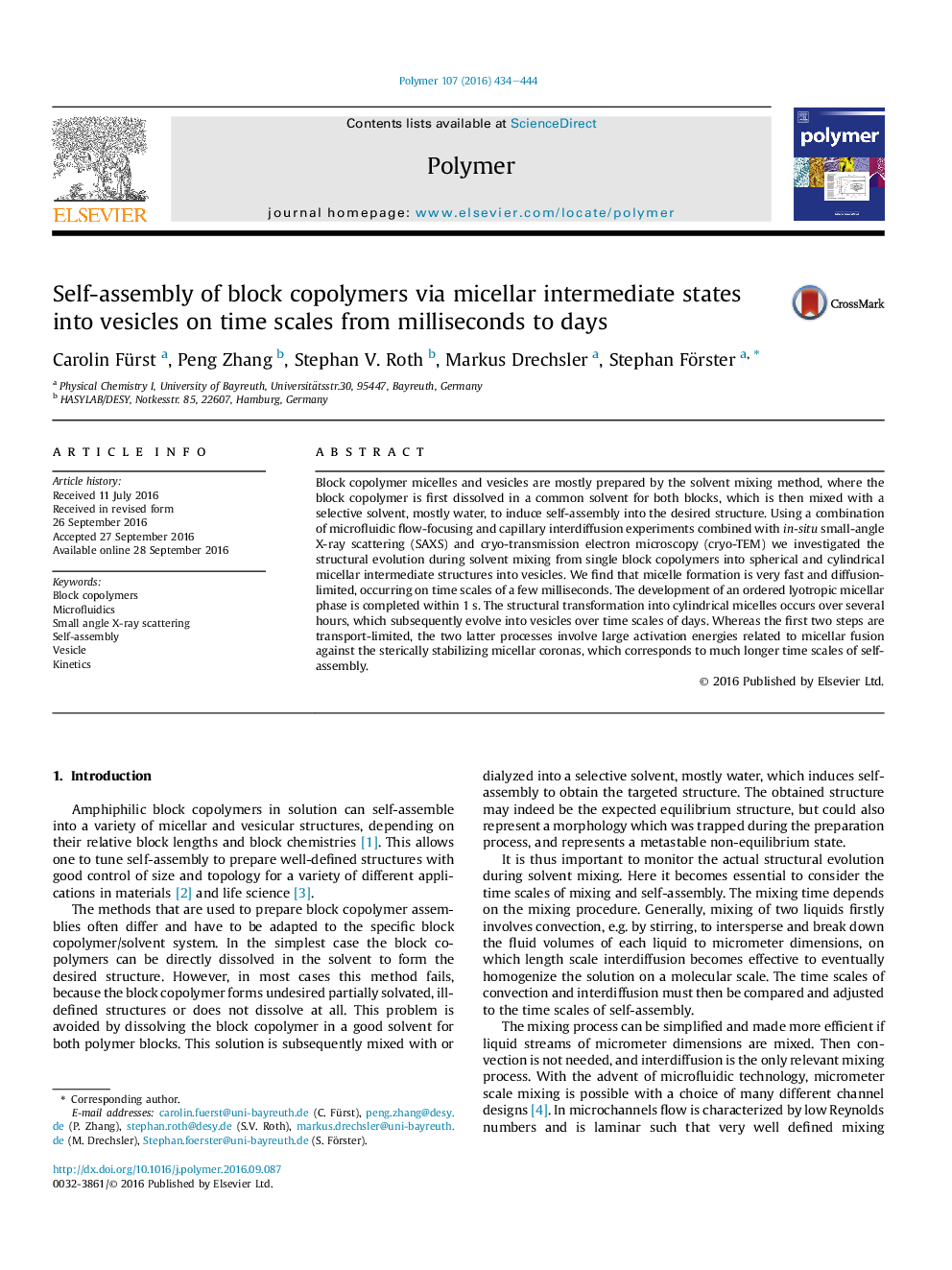| Article ID | Journal | Published Year | Pages | File Type |
|---|---|---|---|---|
| 5178767 | Polymer | 2016 | 11 Pages |
â¢A new 3D-hydrodynamic flow focusing microfluidic chip is designed that avoids wall-contact of reacting solutions.â¢With this design the structural evolution starting from singly dissolved block copolymers can be followed by in-situ SAXS.â¢Micelle formation is diffusion-limited and occurs on time-scales of milliseconds.â¢The subsequent formation of a lyotropic ordered phase takes about 1 s.
Block copolymer micelles and vesicles are mostly prepared by the solvent mixing method, where the block copolymer is first dissolved in a common solvent for both blocks, which is then mixed with a selective solvent, mostly water, to induce self-assembly into the desired structure. Using a combination of microfluidic flow-focusing and capillary interdiffusion experiments combined with in-situ small-angle X-ray scattering (SAXS) and cryo-transmission electron microscopy (cryo-TEM) we investigated the structural evolution during solvent mixing from single block copolymers into spherical and cylindrical micellar intermediate structures into vesicles. We find that micelle formation is very fast and diffusion-limited, occurring on time scales of a few milliseconds. The development of an ordered lyotropic micellar phase is completed within 1Â s. The structural transformation into cylindrical micelles occurs over several hours, which subsequently evolve into vesicles over time scales of days. Whereas the first two steps are transport-limited, the two latter processes involve large activation energies related to micellar fusion against the sterically stabilizing micellar coronas, which corresponds to much longer time scales of self-assembly.
Graphical abstractDownload high-res image (137KB)Download full-size image
